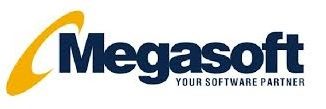
The rapid integration of AI-powered surveillance tools into remote work environments has sparked debates, raising significant concerns about privacy invasion and the erosion of trust between employers and employees. While touted as a means to boost productivity and ensure accountability, the implementation of work-at-home AI surveillance represents a worrisome trajectory, veering away from ethical considerations and human-centric work cultures.
The Ethical Quandary of Work-at-Home AI Surveillance
Proponents of AI surveillance argue its efficacy in monitoring employee activities, citing the need for oversight and maintaining productivity levels in remote settings. These systems often track keystrokes, screen time, and even analyze tone of voice or facial expressions to gauge engagement. Proponents contend that such measures provide insights into workflow optimization and allow for targeted interventions to enhance performance.
However, the pitfalls of this approach are glaringly evident. The use of AI
surveillance encroaches upon fundamental rights to privacy and autonomy. It creates an atmosphere of constant monitoring, fostering an environment of distrust and unease among employees. The psychological impact of being under constant surveillance can lead to heightened stress, anxiety, and a sense of being micromanaged, ultimately undermining morale and creativity.
Furthermore, the accuracy and reliability of these AI systems remain questionable. False positives, misinterpretations of data, and biases within algorithms are prevalent concerns. Such inaccuracies could lead to unfair judgments or penalizations based on flawed interpretations of employee behavior, eroding trust and damaging employee-employer relationships.
The implementation of AI surveillance also amplifies existing power imbalances
It creates a one-sided control dynamic where employers wield extensive monitoring capabilities without reciprocal transparency. This lopsided surveillance infringes upon the employee’s right to work in a conducive and respectful environment, fostering a culture of suspicion rather than collaboration and mutual respect.
Moreover, the issue of consent becomes a pivotal ethical consideration and privacy concerns. Employees often have minimal or no say in the deployment of these surveillance systems. Lack of transparency and communication about the extent and purpose of monitoring violates their autonomy and dignity in the workplace.
A shift towards a surveillance-centric work environment also obscures the underlying issues that might impede productivity. Instead of addressing systemic inefficiencies or offering support for employee well-being, reliance on AI surveillance becomes a superficial solution that fails to address the root causes of reduced productivity or disengagement.
The focus, therefore, should be on fostering a culture of trust, autonomy, and accountability through more humane and collaborative means. Transparent communication, setting clear goals and expectations, and empowering employees to take ownership of their work are far more conducive to building a productive and engaged workforce. So dont forget to check employee surveillance product reviews before selecting.
Organizations should prioritize investing in tools that enhance collaboration, facilitate effective communication, and promote work-life balance rather than surveillance mechanisms. By valuing employees as trusted partners in achieving organizational goals, companies can cultivate a culture of mutual respect, innovation, and productivity.
Final Words
In conclusion, the implementation of work-at-home AI surveillance represents a misguided approach that undermines the principles of trust, autonomy, and respect in the workplace. It poses severe threats to privacy, exacerbates power imbalances, and fails to address underlying issues. Instead, fostering a culture of trust, transparency, and empowerment will pave the way for a more sustainable and ethical work environment, where employees thrive based on mutual respect rather than constant scrutiny.

Leave a Reply
You must be logged in to post a comment.